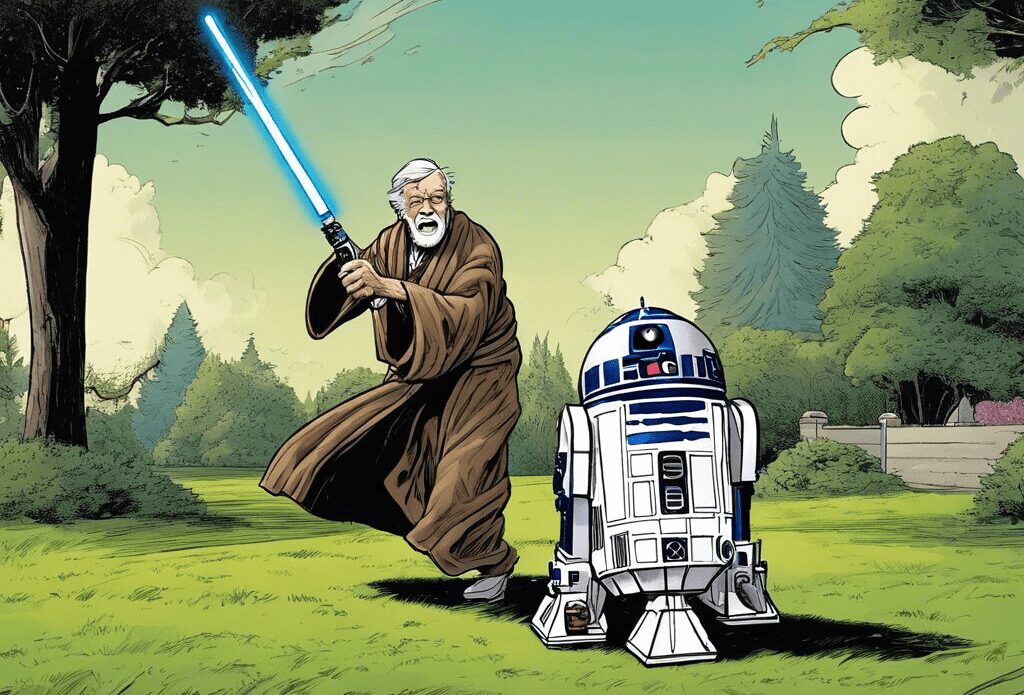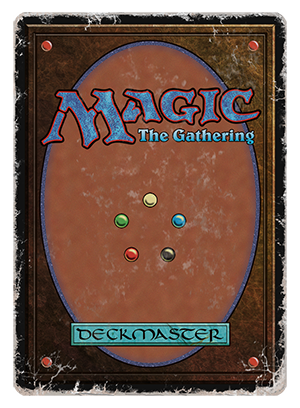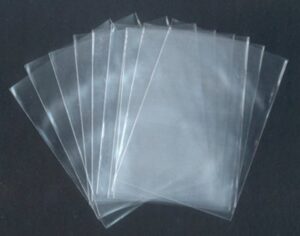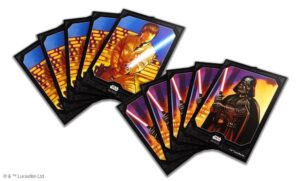Sleeves

We used to shuffle cards. It was not in the manner that happens today with splitting a sleeved deck into two parts and pushing them together. We truly shuffled. It was the same way that you would shuffle a fifty-two card poker deck. Riffling the cards, and then bridging the sides together to combine them back into a more singular pile.

Oh boy, were our cards not mint by a long shot. Our main decks had shuffle curves to them. Not the Pringle-style curves from foil cards, but instead a wavy almost “M” shaped curve put into the cards from a ton of games played. The cards also quickly developed white flecks on the originally black borders (on both the front and back) just from the consistent rubbing up against the other cards.
I actually remember a new set getting released and needing to take a brand new mint card out of a pack and needing to shuffle it numerous times with other brand new cards just so that it would match the rest of a deck and no longer be marked. Essentially, having all the cards marked due to play wear would make none of them marked.
We did all this because when Magic: the Gathering burst onto the scene in 1993, individual card sleeves basically did not exist as they do today. There was also very little dollar value associated with cards at that point, and the most expensive such as Black Lotus, Moxes, etc. were all well under $20 each even into 1994 when they were no longer in print.

Penny sleeves eventually came into the scene as the rare out of print cards started going up in value, and play condition was realized as impacting that value. It became clear that something needed to be done to protect these small pieces of cardboard. These sleeves are still available, but you would never use them today.
The penny sleeves came from the collectible sports card world. They are extremely thin, transparent, and generally used for cards before loading them into the hard plastic top loaders. It was hard to actually find enough of them that were cut exactly the same to sleeve up an entire deck without accidentally marking cards due to thinner or shorter cut pieces of this thin plastic.
Today the collectible card game sleeves are a card game adjacent industry unto themselves. They come in matte and shiny versions. There are numerous colors from a slew of manufacturers. You can get them with all kinds of artwork from fantasy characters, to anime, to movie posters. Websites exist to allow you to have custom sleeves created with nearly any image you can find and upload.
There are even sleeves for inside of the sleeves now, aka Double Sleeving. I suppose it’s just to be even more protective of the cards and stop things like dust and liquid from getting into the single sleeve. I even recently saw one of these inner sleeves that had a flap to tuck into itself in an attempt at fully enclosing the card before then putting it into the outer sleeve. However there has to be a point where it’s either too much protection or not really worth it. Twenty years ago I played with Beta Power 9 in single sleeves, so really that ought to be enough.

The Star Wars: Unlimited official rules go as far as saying that card sleeves must be used in official events and that they need to be opaque and non-reflective. These are of course good rules. It prevents or at least makes it more difficult to have marked cards in a deck. The reflective piece makes sense in preventing cheating capacity.
Present day, I would not advocate for the old school method of physically shuffling cards without sleeves. The rules require their usage and because individual cards coming fresh from packs can be worth $100 or more and demand the protection, it’s single matte green sleeves for me.
However, there is something nostalgic about hearing a poker deck riffle shuffled and remembering back to days when collectible card games were just games. Get off my lawn.